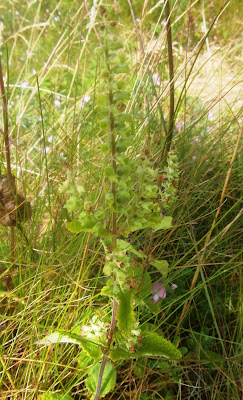On Sunday, we went to Oxwich on the Gower, There were signs of the recent heat-wave but Marsh helleborine (Epipactis palustris), Rest-harrow (Ononis repens), Sea holly (Eryngium maritima), Wood sage (Teucrium scorodonia), Wild thyme (Thymus serpyllum) and Pignut (Conopodium majus) were much in evidence, many attracting insects. The Stone bramble (Rubus saxatilis) fruit was much riper than the Bramble equivalent. There were masses of Common field grasshopper (Chorthippus brunneus), Small blue butterflies (Cupido minimus) and Small skipper (Thymelicus flavus). Gatekeeper butterflies (Pyronia tithonus) were mating as were Six-spot burnet moths (Zygaena filipendulae) as the female emerged from her pupa. There were many Sloe bugs (Dolycoris baccarum) and umbellifers showed beetlemania, including Cteniopus sulphureus).
This blog may help people explore some of the 'hidden' issues involved in certain media treatments of environmental and scientific issues. Using personal digital images, it's also intended to emphasise seasonal (and other) changes in natural history of the Swansea (South Wales) area. The material should help participants in field-based modules and people generally interested in the natural world. The views are wholly those of the author.
Subscribe to:
Post Comments (Atom)
COP a Load of All This?
Brazil's COP30 has just finished. There's been a mixed response to the final statement. Some folk believe that progress ...

-
I n the UK and US, a pparently popular and successful vegan/vegetarian restaurants are reportedly closing or adding meat to their menus ( ...
-
Early ripening fruit may seem convenient but some folk think it confirms environmental stress. There's also a possibility th...






+lateral+Oxwich.JPG)
+fruit+Oxwich.JPG)

+Oxwich.JPG)




%20mating%20NWCW.jpg)


No comments:
Post a Comment